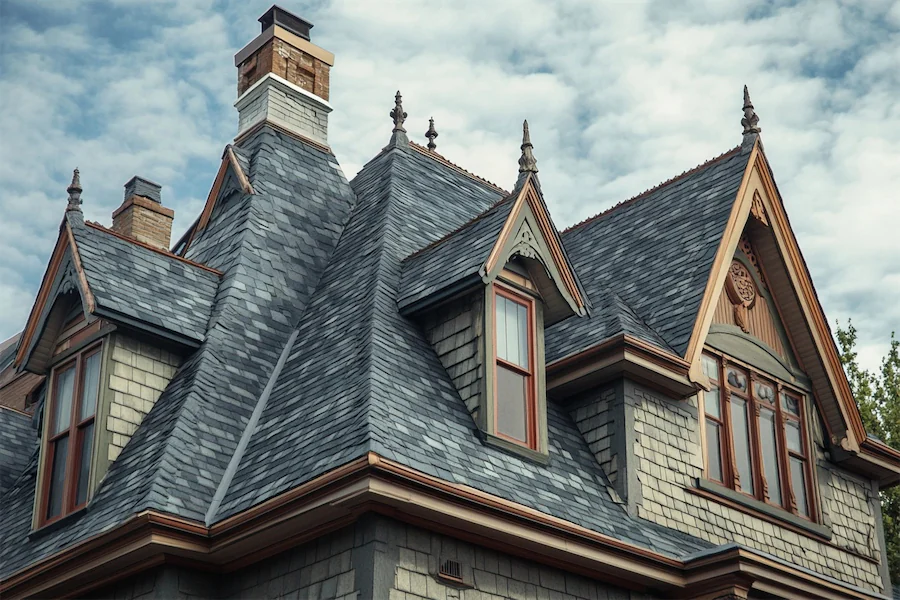Victorian architecture, which flourished during Queen Victoria’s reign from 1837 to 1901, is renowned for its eclectic and ornate designs. The roofs of Victorian-era buildings are particularly distinctive, featuring a variety of styles and decorative elements that contribute to their unique character.
History and Origins of Victorian Roofs
The Victorian era was a time of rapid industrialization and technological advancement, allowing for the mass production of building materials and the incorporation of diverse architectural influences. This period saw a revival of historical styles, including Gothic Revival, Italianate, Second Empire, and Queen Anne, each bringing its own roofing characteristics. The availability of new materials and construction techniques enabled architects to experiment with complex roof structures and elaborate ornamentation.
Key Features of Victorian Roofs
- Steeply Pitched Roofs: Many Victorian homes feature steeply pitched roofs, often incorporating gables and dormers. This design not only adds to the aesthetic appeal but also facilitates efficient water drainage.
- Mansard Roofs: Influenced by the Second Empire style, mansard roofs have a double slope on each side, with the lower slope being steeper. This design allows for additional living space in the attic and is often adorned with decorative brackets and cornices.
- Decorative Gables and Finials: Ornate gables, often featuring intricate woodwork known as ‘gingerbread’ trim, are a hallmark of Victorian roofs. Finials, which are small carved ornaments placed at the peak of gables or along the roofline, add a touch of elegance and intricacy.
- Towers and Turrets: Asymmetrical shapes, often with towers and turrets, are common in Victorian architecture. These elements contribute to the complex and picturesque rooflines characteristic of the style.
Applications of Victorian Roofs
Victorian roofing styles were applied to various types of buildings, including:
- Residential Homes: Victorian houses often showcase complex roof structures with steep pitches, gables, dormers, and decorative elements, reflecting the homeowner’s status and the architectural trends of the time.
- Public Buildings: Structures such as town halls and train stations adopted Victorian roofing styles to convey grandeur and civic pride, often featuring elaborate rooflines and ornamental details.
- Religious Buildings: Churches and chapels incorporated steeply pitched roofs and intricate gables, aligning with the Gothic Revival influence prevalent during the Victorian era.
Considerations When Choosing Victorian Roofs
When considering Victorian roofing designs, it’s important to take into account:
- Structural Complexity: The intricate designs require advanced engineering to ensure stability and durability.
- Material Selection: Traditional materials like slate and wood shingles were commonly used; selecting appropriate materials is crucial for authenticity and longevity.
- Maintenance: The elaborate details and ornamentation demand regular upkeep to preserve their aesthetic and structural integrity.
Conclusion
Victorian roofs are emblematic of an era that celebrated ornamentation and architectural diversity. Their distinctive features continue to influence modern designs, serving as a testament to the enduring legacy of Victorian artistry.
